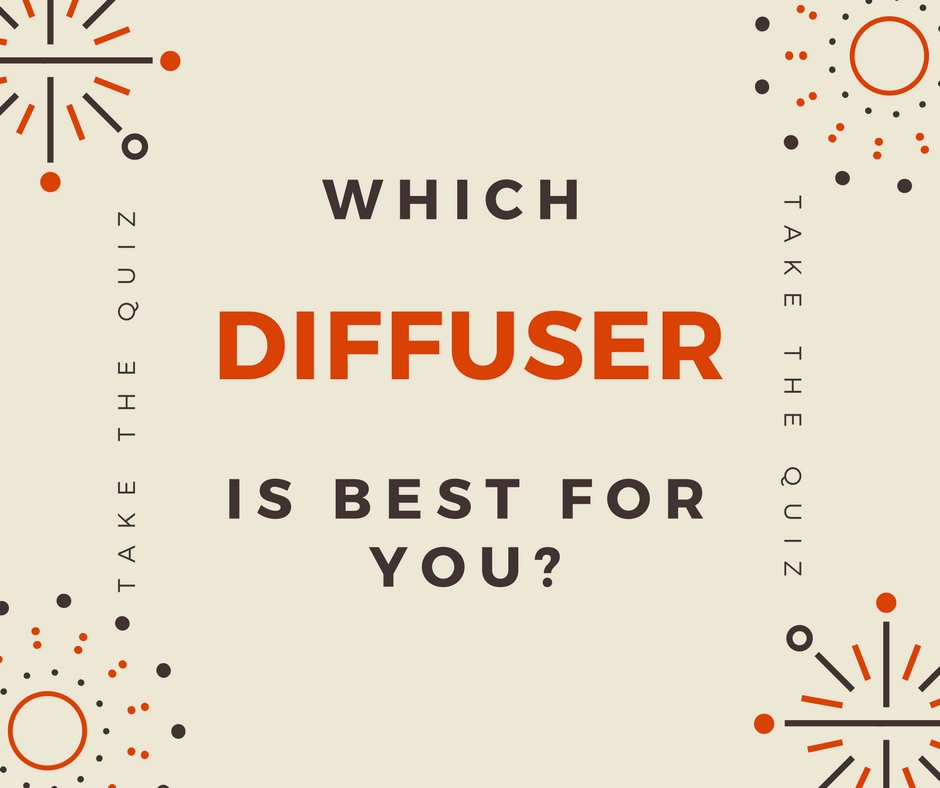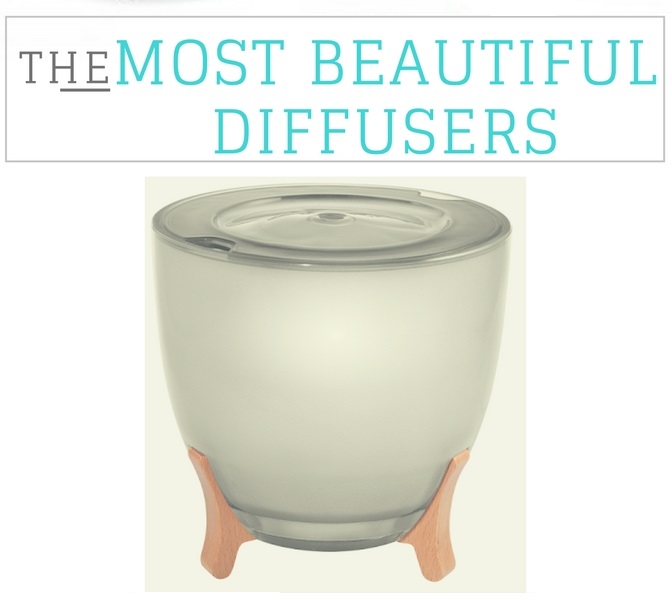This post may contain affiliate links. If you make a purchase, I may earn a commission. As an Amazon Associate, I may earn from qualifying purchases.
You may have heard that essential oils are too harsh to be contained in plastic containers. Why, you might ask then, are most of the diffusers out there made of plastic? A fair question and one that may lead you to think that a glass oil diffuser is a better choice. In this article I will discuss
- what types of plastic are compatible with essential oils
- when you should not use plastics with essential oils
- which diffusers are truly glass diffusers
Essential oils and plastics:
The first point to clarify is that undiluted essential oils should not be stored in plastic containers. Ideally, your essential oils should be stored in a dark glass bottle to protect the oil. The dark glass protects it from changes caused by light, and the glass so that the oils don’t “eat” at your container.
When we dilute essential oils, glass is no longer necessary for storage as there is only 1-2% essential oil concentration in our finished product.
The second point to consider is if you want to store diluted essential oils in a plastic container, you should look for PET plastic. You can identify PET plastic products by the recycling symbol #1.
Most essential oil diffusers made of plastic use about 5-10 drops of oil in 150ml of water. When you consider that a 1% dilution is 6 drops per 30 ml, you can see that 5-10 drops in 150 ml is about a .20% dilution.
So, when using a plastic based diffuser, you will want to favor plastic that is PET and make sure that you follow the recommended dilution guidelines for your diffuser. When you do this, your solution will be very dilute and unlikely to damage the plastic.
A note about citrus oils: Many manufacturer’s specifically caution against using citrus oils in their plastic diffusers. My personal experience is that if you dilute properly, and clean your diffuser regularly you should be able to get away with using citrus oils in a plastic diffuser. To be clear, you may void your manufacturer’s warranty by trying this, but I have diffused a lot of citrus in my ultrasonic diffuser and two years later it still looks and works fine.
Finding Real Glass Diffusers:
If you are searching for a glass diffuser, you may notice that many diffusers are glass on the outside but the chamber for the oil is still plastic. This is mostly true of glass ultrasonic diffusers. As I have discussed above, this shouldn’t be an issue because these diffusers use oils diluted in plenty of water. If you are interested in a glass & plastic ultrasonic diffuser like this, several are highlighted in my roundup of the most beautiful diffusers.
If you want a diffuser that is truly made of glass (no plastic in the chamber), your main choices will be nebulizers or passive diffusers. There have been a few glass chambered ultrasonics over the years. I have a glass ultrasonic by Radha, however it has been discontinued. Recently I found a glass diffuser by LYAROMIS (affilate link) at Amazon, however the customer reviews for this product are mixed.
Glass Nebulizing Diffusers:
Nebulizers use pure, undiluted essential oil so they need to be made of glass or ceramic. There are two main types—ones that have a glass chamber, or ones that allow you to attach a glass bottle to the device. I won’t go into the pros and cons of each as I cover nebulizing diffusers in depth in this article.
Some of my top choices for nebulizing diffusers with a glass chamber include:
Aromis
Aromis has been in the nebulizer business for a number of years now. There are two things that I love about them:
- you can mix and match to create one of 16 styles of diffuser
- as a company they have stayed true to their glass and wood diffusers without getting distracted by other types of diffusers.
Trillia Beevey
Trillia is a Taiwanese company with a line of nebulizing diffusers. All of their designs are glass and wood, but some of the wooden bases come in colors (blue, pink and white) which is unique. They boast a more modern, simple design with the emphasis on the wooden base and not fancy glasswork.
Aroma 2 go ZIBA
The Ziba has colored lights—which is a rarity in nebulizing diffusers. It has an attractive, clean design with equal parts wood and glass. It has an intermittent timer function and is competitively priced compared to other nebulizers.
Nebulizers that use an essential oil bottle:
Diffuser World Aroma Ace
This is one of my top choices for a diffuser overall. It is a low maintenance nebulizer and is available with an optional silencer. While the unit itself is plastic, the essential oils are supplied directly from the glass bottle.
Aroma Whisper
The Aroma Whisper is an alternative to the Aroma Ace. It also draws its oil from the bottle but the bottle is separate from the pump housing. Since these machines were built for function, not form, this allows you to place the bottle and stand on your counter, and tuck the unattractive pump out of sight.
Passive Diffusers:
The other option for glass diffusers are passive diffusers such as oil warmers. There are a wide range of beautiful and inexpensive oil warmers available.
Aromastone:
The Aromastone is actually made of ceramic, but since most people looking for glass diffusers are really looking for options that are not plastic, I have included it. It is a favorite of aromatherapists. This one can be used with a little water, or you can put oils onto it neat. It does use heat, which normally I don’t recommend but it is a much gentler heat than most oil warmers.
The Aromastone is small (about 4 inches in diameter) and is best for small rooms where you want a mild aroma. It is a safer option than oil burners since it does not get too hot and there are no candles to forget about.
Oil Warmers
There are many beautiful and unique oil warmers. All of these have either a glass or ceramic basin in which you place a few drops of oil in a little bit of water. The water and oils are heated either electrically or with a candle.
Warmers are very reasonable and come in so many styles you are bound to find one to fit your taste. The downsides are that by heating the oils, some of the chemical components of the oil may evaporate off unevenly which could affect the oil’s therapeutic benefits. The other disadvantage is the heat (especially from candles) can be a safety concern—all the more so if you have children or pets that may knock it over or reach for it.
One diffuser that I was recently made aware of is the Kitras line of blown glass diffusers. These are made in Canada and are lovely pieces of art glass. Within the bowl is a small chamber where you can put some essential oils. These oils evaporate completely passively (no heat and no fan to speed things along). In the US you can find them at Gardener’s Supply Company or in Canada, at Kitras.
Reed Diffusers:
Reed Diffusers The final type of diffuser to consider if you are looking for a glass container is the reed diffuser. These are glass bottles that hold a mixture of diffuser base and essential oils. A few reeds are set in the liquid that wick up the fragrant solution. The scent evaporates off of the reeds.
While several are available with both reeds and bottles, there is no reason you couldn’t get a little crafty here. Go to the antique store and find a pretty vintage bottle to use. Reeds are inexpensive and easy to find in bulk. The diffuser base oil is also readily available, but be sure to look for one that is DPG, phthalate and alcohol free.
Why are there not all glass ultrasonic diffusers?
I can only offer my personal theory on this. Ultrasonic diffusers work by emitting ultrasonic frequencies that disturb the water and cause a mist to form. These vibrations occur thousands of time per second. My guess is that glass may not withstand all these tiny vibrations as well as plastic. Plastic has a little give to it, while glass is pretty rigid. It is possible that glass would craze or fracture if exposed to repeated vibrations. Again, just my theory.
Summary:
There are several options to choose from when looking for a glass oil diffuser. The only diffuser type that is difficult to find in glass is the ultrasonic diffuser. Generally speaking, a glass ultrasonic diffuser with a plastic water reservoir will be safe to use since the essential oil dilution is so weak. If you prefer all glass, the nebulizing diffuser will be your best bet. If a nebulizer is not in your budget, there are several passive diffusers you could try. These will not give you the same aroma strength and room coverage as nebulizers, but there are many choices made of glass or ceramic.




It isnt about the safety of the diffuser. It is about the safety of people when oils are in contact with any plastic PET or not. Surely there are some ”diffusers” with glass bowl without being a nebulizer –or other.
PET or not—oils and plastic I do not believe mix without consequence.
Hi, there was one for awhile–the Radha glass diffuser. I have one. For some reason they don’t seem to offer it anymore. I checked their company site too. I have not seen any others but if anyone comes across one I would love to hear about it. It is still available wholesale on the sourcing site Alibaba, so maybe someone else will start importing them. I hope someone does because you are not the only one looking for something like this. As for PET plastic, it will eventually break down, but it takes much longer.
I realize this is several years later but oh well!
I very much appreciated your point. I too was thinking- screw the plastic, I’m more worried about the preserving the integrity of my oils and purity of the mist that’s pumped into the air.
I see the author’s point about water diluting the oils making it safer but I believe it’s marginal at best….
Even if it was 100% safe and oil integrity was untouched, I would still find plastic models undesirable for environmental purposes
It’s been 3 yrs since you replied and
I’m super disappointed to be living in a world in which glass ultrasound diffusers are STILL pretty much non-existent.
I’m only aware of one that is currently on the US market. It’s being sold by Amazon. But there are some downfalls and red flags. For one, capacity is a mere 80ml. It’s powered by a very short USB cord as well.
There are a generous amount of 5 star reviews but most have all the hallmarks of being unreliable and bogus.
Whereas the negative reviews are much more credible. There is a notable consistency in all of the critical 1 star reviews. And actually, the similarities and consistencies extend all the way through the 3 star critical reviews.
It other words, it appears to be 80ml worth of trash.
I am going to pass on buying more Amazon garbage and keep looking for a plastic free ultrasonic diffuser
https://www.amazon.com/dp/B08NDB44DW/ref=cm_sw_r_cp_apa_glt_fabc_YEVBZVPPNN2N5MMG44C0